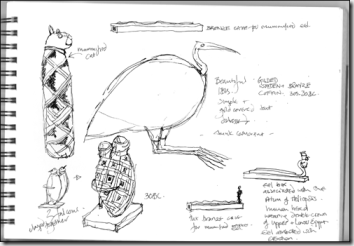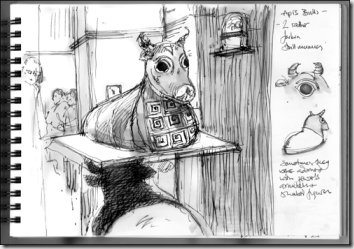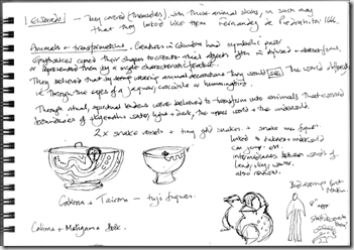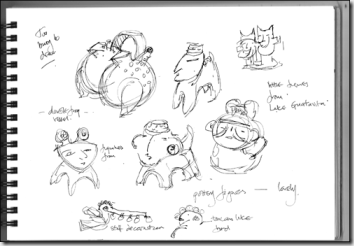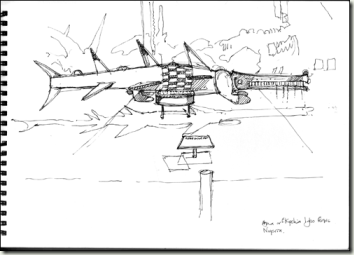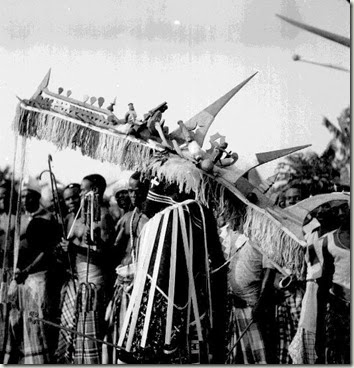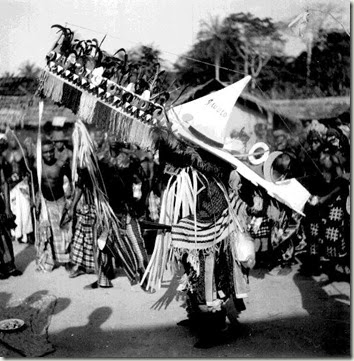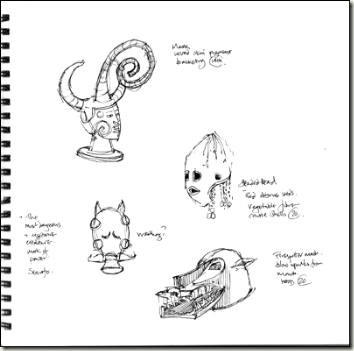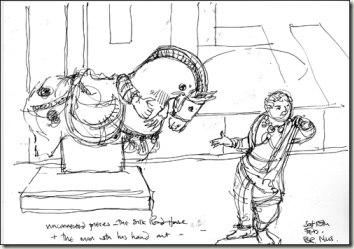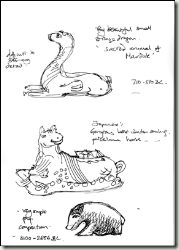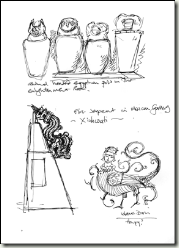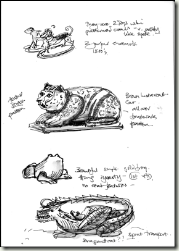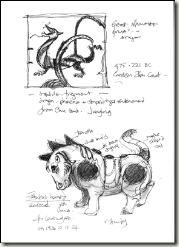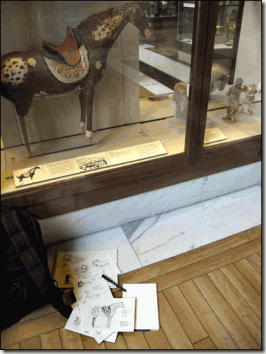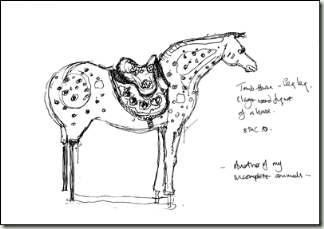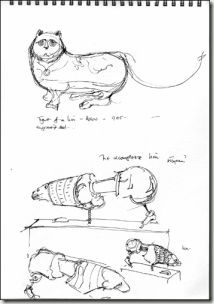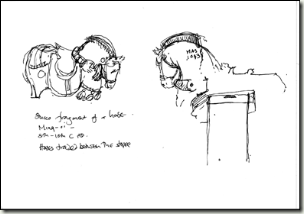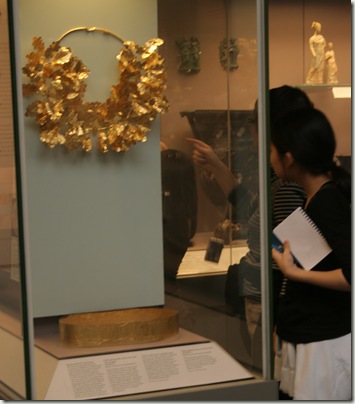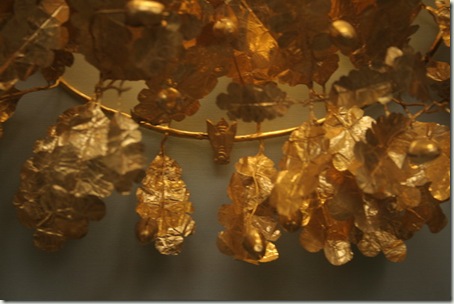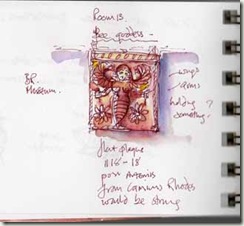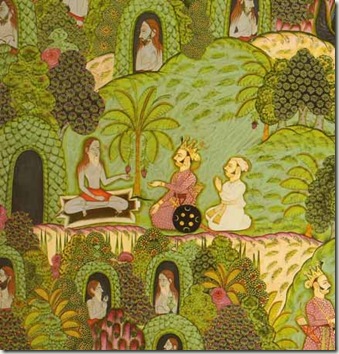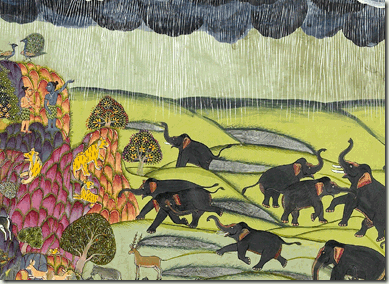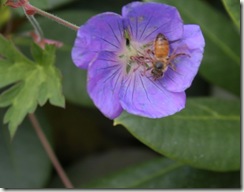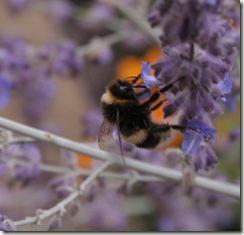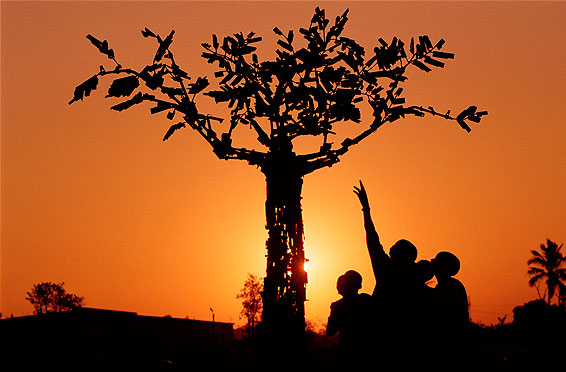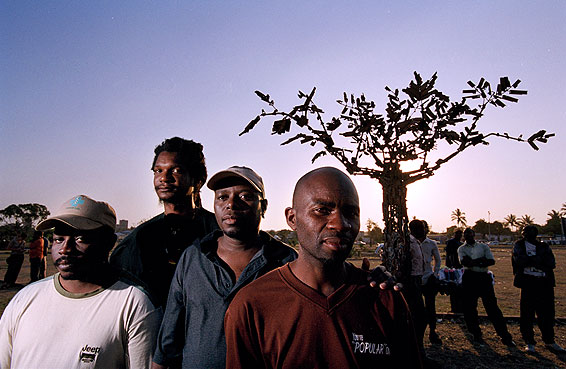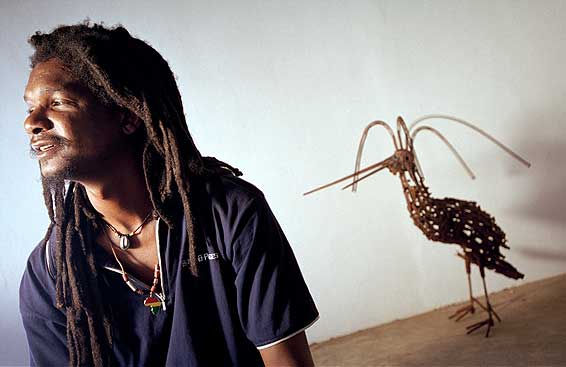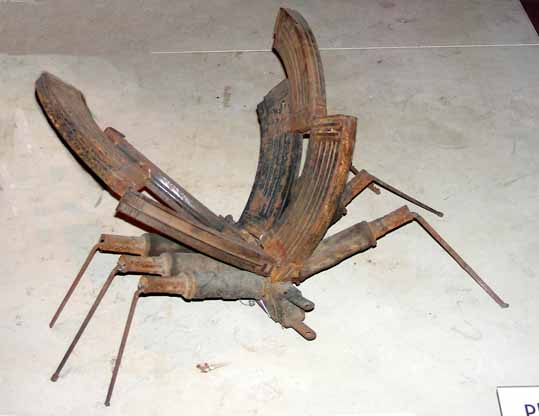Last Saturday I returned to the British Museum for a couple of hours to do a bit more research and sketching.
Working on the Beautiful Beasts blog has made me wonder why we so like to make images of animals. Of course, the use of animal imagery in art, design and utilitarian objects warrants a lifetime of study, each culture having its own different beliefs, magic and symbolic systems and there is a wealth of info in the Museum.
I go to the Museum to read, as much as to look and draw and on Saturday I particularly wanted to read about the Egyptian mummified animals and then get a quick visit to the fabulous “Beyond El Dorado Power and gold in ancient Colombia” exhibition of exquisite golden and ceramic artefacts.
The animal mummies in Egypt were prepared for various reasons; a favourite pet to accompany you, an offering to the appropriate animal god or as food in the afterlife. In the main animal mummy case are cats, small crocodiles, falcons, a baboon, bronze relic boxes for a snake and an eel, a beautiful ibis case and fish “coffins”. There is nowhere to sit, so it’s a matter of drawing on the move while dodging the crowds .. the lines are a bit wobbly!
Everyone is fascinated by the cats. One in particular has a smile. One apprehensive little girl wanted reassurance that they were really dead.The linen wrappings are very beautifully executed with contrasting coloured cloths in a geometric pattern.
In another case were two forlorn bulls which don’t attract much attention, so I could wedge myself in a corner by the case to draw.
“Bulls were sacred to several gods. The famous Apis bull at Memphis was considered the earthly manifestation of Ptah, through which he issued oracles” from the British Museum Website
The wisdom of the bull.. Beyond El Dorado On to the El Dorado exhibition which was packed. It was impossible to stand and draw without getting in the way of the tide of people, so I just made a few notes.
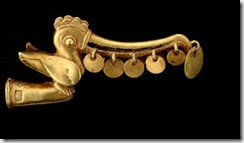
This is an exquisite little gold staff decoration. From the British Museum Website.
“The exhibition will explore the complex network of societies in ancient Colombia – a hidden world of distinct and vibrant cultures spanning 1600 BC to AD 1600 ….The remarkable objects displayed across the exhibition reveal glimpses of these cultures’ spiritual lives including engagement with animal spirits though the use of gold objects, music, dancing, sunlight and hallucinogenic substances that all lead to a physical and spiritual transformation enabling communication with the supernatural.”
There were some interesting snake related items. I was particularly pleased to read that snakes were revered for their ability to move easily between the elements of earth, water and sky (through jumping) and through the shedding of their skins were linked with concepts of renewal…..Go snakes!
A few notes of the lovely little ceramic figures from Lake Guatavita. A5 sketchbook. T
here is so much material to work with and so many ideas to pursue. If you are ever in need of inspiration, a trip to the British Museum is the answer, but take a sketchbook not a camera. You will see much more.
Adder Progress…is slow… But steady and I am back to the adders for Beautiful Beasts this week. The two 2 lino prints in preparation are going to be an opportunity for more experimentation. It’s the end of March very soon and so I am concentrating on getting previous idea resolved and a few things finished. One quarter of the year already gone..how did that happen!

